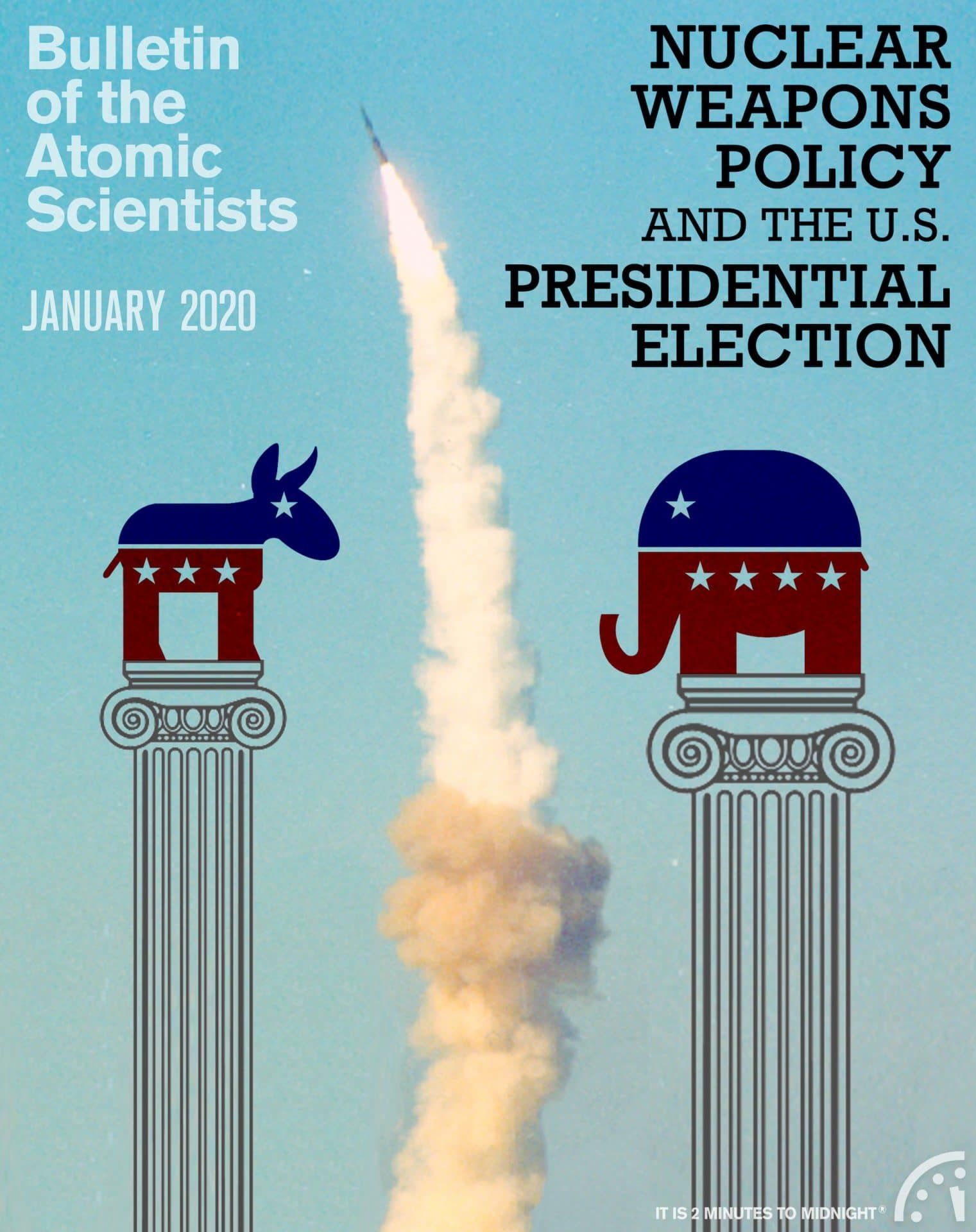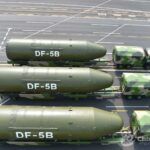It’s time to jettison Nuclear Posture Reviews
By Brad Roberts | January 1, 2020
It’s time to jettison Nuclear Posture Reviews
By Brad Roberts | January 1, 2020
Since the end of the Cold War, there have been four Nuclear Posture Reviews (NPRs). Should there be a fifth? No. It’s time to move on. Despite their many virtues, these reviews are not delivering what the nation needs. Indeed, the entire policy and posture review architecture of which the NPR is a part needs to be replaced. Only with such a radical step can we hope to put our intellectual house in order and to formulate security policies that are fit for purpose in the new strategic environment.
Some historical context will be useful here. The first NPR was done in 1994, as an adjunct to the comprehensive review of post-Cold War defense strategy conducted by then-Defense Secretary Les Aspin (known as the Bottom-Up Review). Formal reports of both reviews were provided to the Congress, along with the congressionally mandated National Security Strategy. The Congress then mandated that the executive regularly prepare and deliver a Quadrennial Defense Review. It subsequently required the George W. Bush administration to prepare an NPR and the Obama administration to do both an NPR and a Ballistic Missile Defense Review. The Obama administration also conducted reviews (and issued reports) of policy and posture in cyber space and outer space. The Trump administration has essentially replicated this study architecture with at least a half-dozen reviews and reports.
To be sure, these reviews have served some useful purposes. Within the executive branch, they compel leadership focus, ensure civil-military cooperation (and civilian control), promote policy coherence, and discipline policy implementation. In the executive-legislative relationship, they serve as a vehicle for dialogue, consensus building, and budgeting. They are also a tool for communicating policy objectives to other stakekholders and for receiving feedback. These reviews have also revealed and reinforced the substantial continuity of purpose in US policy across administrations of different political stripes.
From a nuclear policy perspective, a regular top-down review makes good sense. After all, circumstances and assumptions change. A returning administration needs to take stock and consider some mid-course corrections. A new administration must face the nuclear problem squarely and decide what to keep and what to change in legacy approaches. If a Democrat returns to the White House in 2021, the discussion of change will likely again focus on how far to go in embracing the progressive agenda of unilateral changes to declaratory policy, alert posture, and force structure. This agenda includes adoption of no-first-use, additional de-alerting, withdrawal of US nuclear weapons from Europe, and elimination of one leg of the Triad. Ten years ago, a president eager for change in nuclear policy affirmed the long-term goal of a world without nuclear weapons but rejected most of the progressive agenda, on the judgment that such unilateral action would only make a dangerous world more dangerous. In the interim, circumstances have not changed for the better; on the contrary, today the adoption of the progressive agenda could be read by potential adversaries as signaling a lack of US nuclear resolve and thereby increase the risk of their nuclear miscalculation. It would likely also fuel the widespread perception that the United States is in retreat from the global stage and unwilling to bear the costs and risks of international engagement and leadership—a judgment that would encourage intensified probing by challengers as well as proliferation by allies no longer confident in the US nuclear umbrella.
But there are good reasons to abandon the policy study architecture as it has taken shape over the last two decades and to replace it with something better. One reason is that it has failed to come to terms with the new military problem now facing the United States. The other is that it has failed to give the necessary focus to the new strategic landscape.
The new military problem
The new military problem can be defined simply: it is the problem of regional conventional wars against nuclear-armed challengers who oppose U.S.-backed regional security orders. Russia, China, North Korea, and Iran have studied the American way of war, identified US strengths and vulnerabilities, and developed tailored, asymmetric strategies and capabilities aimed at dissuading the United States and its allies from challenging their efforts to re-make their regional security orders and from using all of the means available in time of war. Three of the four have made nuclear forces central to their strategies. These countries are prepared to fight a form of modern warfare described by former Chairman of the Joint Chiefs of Staff Joseph Dunford as multi-domain, multi-dimensional, and trans-regional. They have prepared to operate in an integrated way across those domains, dimensions, and regional boundaries to impose costs and risk on the United States and its allies incommensurate with what they perceive to be our more limited stake compared to their own.
Their new way of war is inherently risky. Part of the risk flows from their conviction that they can out-compete the United States in an escalating test of wills through the use their high-leverage weapons (including but not limited to nuclear weapons) to, in the words of one Russian official, “sober but not enrage” us. But the risk of miscalculation has other sources. One is the rapid integration of new disruptive technologies (such as artificial intellignece or hypersonic strike systems) with uncertain military implications. Another is the crisis of confidence in US security guarantees now widely in evidence, following President Trump’s many comments that suggest that he would not defend US allies and his demonstrated reluctance to engage in military conflict. A combination of these factors could lead a foreign leader to step across the nuclear or some other high threshold only to discover that the United States isn’t a paper tiger after all. Japan’s leaders made that mistake in 1941, just as Iraq’s leaders did in 1990.
In contrast, the United States and its allies remain dangerously unprepared for such a conflict. For the period between 9/11 and the annexation of Crimea in 2014, US military thought was centrally focused on the challenges of counter-terrorism and counter-insurgency. Since then, the United States has been working on developing a “new playbook” (as called for by Defense Secretary Ash Carter in 2015) and re-focusing on major power rivalry and strategic competition (as called for by the National Defense Strategy of 2017). How are we doing? The most authoritative judgment comes from the National Defense Strategy Commission, a bipartisan group chartered by the Congress to assess each administration’s defense strategy and advise the Congress. The November 2018 Commission report adopted language without precedent in its 25 years of work. It concluded that the Unite States “could lose” the next state-to-state war and that a “crisis of American power is now upon us.” It found particular fault with the lack of thinking about how to deal with the escalation strategies of powerful adversaries (“there is little consensus on what deterrence means in practice, how escalation dynamics might play out”) and what to do “if deterrence fails.” Having so long put its emphasis on conventional dominance and marginalized nuclear deterrence, US defense planners bring precisely the wrong picture to the new requirements of integrated strategic deterrence.
How can it be that Pentagon leaders don’t agree on deterrence, escalation, and strategic competition after a string of policy and posture reviews? Part of the problem is leadership turnover; different teams have led each review. Part of the problem is that the culture of many current defense leaders has been shaped by decades of US military dominance; this has made it very difficult for them to come face to face with the challenges of accepting high risks, paying high costs, and coercing powerful adversaries. Part of the problem is that the capability-specific reviews are only loosely connected to each other; we talk about multi-domain deterrence but don’t actually know how to practice it. And part of the problem is that the institutional capacity to engage in strategic thought was harvested out of the military services and larger defense community in the 1990s as part of the post-Cold War peace dividend. This problem is magnified by the nuclear taboo, which effectively precludes thinking in the US government about managing nuclear crises. Perpetuating the current architecture of defense policy and posture reviews simply perpetuates these problems.
The new strategic landscape
The second good reason to abandon the study architecture is just as compelling as the first: The strategic landscape has evolved in ways contrary to US policy preferences. Put differently, US strategic policy as it has been pursued since the end of the Cold War has come to a series of dead ends. To move forward to new and hopefully more effective policies, we must see the new landscape for what it is, rather than as we might wish it to be.
With varying degrees of consistency over presidential administrations of both parties since the end of the Cold War, US strategic policy has been built on the following core premises (among others):
The first and central premise was that the end of Cold War confrontation provided a significant opportunity to put the strategic military relationship with Russia on a new footing of cooperation and reassurance. US policymakers have therefore consistently pursued arms control with Russia, believing that improvements to the nuclear relationship would help to improve the broader political relationship.
A closely related premise was that the nuclear problem itself was receding in significance internationally. US policymakers have therefore been willing to reduce the role, number, salience, and deployments of nuclear weapons in US national strategy. They were willing to accept whatever increased risks to deterrence these steps might entail because of their expectation of enduring US conventional military supremacy.
A third premise was that the China-US strategic military relationship could evolve without becoming competitive or unstable. US policymakers have therefore adopted a laissez faire attitude to Chinese nuclear modernization. They have held on to the notion that Washington and Beijing could work together to protect strategic stability—even without answering China’s central strategic question to the United States. (Does the US accept or reject mutual vulnerability with China as the basis of the strategic military relationship?)
A final premise was that the United States could re-orient its strategic posture toward the “rogue states” (by building up its homeland missile defense to “stay ahead” of those threats and adding non-nuclear strategic strike capabilities), while accepting and not worrying too much about dangerous responses by Russia or China. US policymakers therefore took only limited steps to assuage the complaints of Moscow and Beijing about America’s supposed insults to strategic stability while pursuing missile defenses without legal or technical constraint.
Not a single one of these premises remains valid today. Let’s review the realities of the new strategic landscape.
With Russia, opportunity has given way to hostility. Rather than seek strategic stability with the United States, President Putin calls for “new rules or no rules.” He has kept his promise to “snap back hard” against a European security order he considers an unacceptable tool of containment. He pursues a zero-sum game globally against US interests. Cooperation on the nuclear relationship has been replaced by confrontation and near arms-racing. The post-Cold War arms control regime lies in tatters, a result of Russian withdrawals or violations (with the important exception of New START). Nuclear issues have become another source of friction in the political relationship.
The nuclear problem has not receded. On the contrary, the nuclear shadow has gotten longer in international politics. Strategic competition among the major powers has intensified, and includes a significant nuclear dimension. Three major sub-regions are marked by intensifying nuclear competition. Allied anxiety about the credibility of the US nuclear umbrella has intensified, especially but not exclusively in Northeast Asia. The United States has little to show for its efforts to encourage nuclear restraint by others. US conventional primacy has slipped, calling into question its ability to accept more deterrence risk in the name of threat reduction leadership. The danger of miscalculation leading to nuclear escalation has returned as a major problem.
The China-US strategic military relationship, like the rest of the bilateral relationship, has become more competitive and unstable. China’s leaders have repeatedly rejected calls for sustained, high-level dialogues on nuclear and strategic matters. President Xi has joined President Putin in describing the existing world order as dangerous and unacceptable, and the two have made common cause in challenging that order across Eurasia. A three-year, ongoing trade war has dramatically undercut the previous role of China-US economic interdependence as ballast against growing military-strategic confrontation.
North Korea has made “staying ahead” with missile defenses increasingly difficult, as it proceeds in apparently steady measure to field a small nuclear force. Staying ahead would involve at the least taking sensors to space and advanced interceptors to sea, both of which would be deeply troubling to Moscow and Beijing. And their responses at the regional level of war are already deeply troubling to US allies, as they should be to the United States.
These dead ends became increasingly evident during the second Obama term, although there were earlier warning signs. But they attracted little public discussion by the Obama administration in its endgame, intent as it was on painting the best possible picture of its accomplishments. The Trump administration’s reviews address aspects of this new landscape, for example by decreasing the emphasis on arms control with Russia and increasing the emphasis on strategic competition with China. But overall its strategic policies are strikingly similar to those of its predecessors. This hasn’t spared it from passionate criticism. Such criticism makes it is easy to forget that the dead-ends in US policy are not the result of poor choices by the Trump administration. But it’s also the case that some of President Trump’s choices—including resistance to a New START extension, his denigration of US allies and alliances, and the prolonged trade war with China—have compounded the problems now facing the United States.
The right 2021 starting point
Whatever team takes the national helm in January 2021 will be faced with this new military problem and this new strategic landscape. As it considers how to frame the 2021 reviews of strategy, policy, and posture, the next US administration should recognize that something different is needed this time.
America’s national unpreparedness for the new military problem has something to do with the way in which the review process breaks the challenge into separate elements. The review process does not ensure the needed integration of strategy or capabilities. Put differently, it does not come to a point where leadership has to ask whether the whole is more than the sum of the parts—that is, whether the combination of capabilities will be effective in negating the strategies of plausible adversaries.
And our national unpreparedness to address dead-ends in strategic policy has something to do with the way in which the review process focuses on means (capabilities) rather than ends. The review process was heavily faulted by the National Defense Strategy Commission for its failure to develop needed operational concepts for new strategic purposes.
One possible fix would be to combine the reviews of nuclear, missile defense, cyber, and space issues into a comprehensive Strategic Posture Review. This could then serve as a counterpart to the comprehensive review of conventional forces in the Defense Strategy Review (formerly known as the Quadrennial Defense Review). This would be a step in the right direction by ensuring some policy coherence regarding the strategic toolkit and some degree of integration for cross-domain deterrence. But it would perpetuate the divide between strategic and conventional. This would likely reinforce the tendency of the armed services (and the defense budgeting process) to focus on conventional forces while leaving strategic capabilities to someone else. In short, this approach wouldn’t go very far toward solving the integration problem. And it might do nothing to address the dead ends in strategic policy. A single, comprehensive review is needed.
The right first questions
The first requirement of such a single, comprehensive review is that it be “strategy-driven.” That is, it should begin with an overall approach to the new strategic landscape and the new military problem. Toward that end, this comprehensive review could usefully be organized to address the following fundamental questions:
First, how should the United States and its allies prepare to fight and win (and thus deter) a regional conventional war against a nuclear-armed power with multi-domain and transregional capabilities? The new military problem demands an answer. Without an answer, the American role as a security guarantor will be rapidly eclipsed, and along with it the security orders in Europe and East Asia.
The answer to this question does not begin with separate capability assessments. It should begin with a rigorous effort to “go to school” on our adversaries, just as they have gone to school on us, to understand their way of war and their strengths and vulnerabilities, along with their strategies to deter and defeat the United States and its allies and partners. It must then encompass development of a theory of victory—a collection of hypotheses, concepts, and assumptions about how the United States and its allies can strip away the confidence of adversary leaders in their strategies for regional war, so that they are then deterred from attempting aggression. Those strategies rely on blackmail, brinksmanship, and coercion. These are risky strategies. It should be possible to significantly influence the adversary risk calculus to our advantage. But this requires new operational concepts and some new capabilities. It requires the ability to coordinate US and allied military actions in all of the operational domains, and all of the dimensions of combat, to bring the enemy decision-maker to a “culminating point” (to quote Clausewitz), where he opts not to run the costs and risks of war (or further war). Put differently, we need an approach to deterrence suited to the landscape in front of us, not the one we inherited from the 25-year period after the Cold War.
Second, how should the United States and its allies engage in the gray zone? This is the domain of conflict short of armed hostilities where US adversaries attempt to create “new facts on the ground” consistent with their ambition to re-make the regional security order in which they sit. Russia has made aggressive use of hybrid warfare, information “confrontation” strategies, and “direct action” to undermine the European security order, while China has made aggressive use of political and economic coercion and military assertiveness to contest the East Asian security order.
The answer to this question requires a better understanding of adversary strategies, which have so far been seen by US experts as a string of separate political, military, legal, law enforcement, and counterintelligence problems rather than a coherent set of adversary strategies. That answer requires effective counters to each of those problems. But more than that, it requires that the United States and its allies and partners become effective at using the gray zone pro-actively to accomplish high-level foreign policy and national security objectives of their own.
Third, what kinds of strategic military relationships should we want and can we have with Russia, China, North Korea, and Iran? And with US allies? Is the reassurance of allies still an important US policy priority? And what does it require? How much should we be prepared to address the concerns of Russia and China about our response to regional adversaries? And will they be prepared to engage and, if so, on what basis? Do we still accept mutual vulnerability with some but not others? Should the US adopt minimum deterrence or strategic dominance as a way to greatly simplify the strategic challenges in the new environment?
In a volatile security environment, it is tempting to see all of these as open questions. The US national answer might simply be that “it depends on how it goes.” But these need not be open questions. Greater clarity from the United States, still the most powerful military actor in the international system, would go a long way to bringing some strategic predictability to an uncertain environment.
Fourth, what threats do we seek to reduce and what are our strategies (bilateral, multilateral, unilateral) for doing so? What new compromises should we be prepared to make in exchange for restraint by others?
If arms control is to have a role in the new strategic environment, it must have a role in helping to stabilize and reduce the risks associated with the new military problem. This requires understanding those risks, which remain unfamiliar to an arms control community that seems to prefer the continuation of legacy approaches. Those risks include the legacy risk of a breakdown of deterrence due to misunderstanding and miscalculation. But those risks also include greater strategic unpredictability, in part because of the potential deployments and still-to-be-discovered applications of new technologies. Both formal and informal approaches need to be on the table. Arms control strategy must also account for the demand from the US Senate that Russian non-compliance not be overlooked in the pursuit of new measures. Are we prepared to reward Russia for its noncompliance with multiple arms control measures by joining with it in a set of new measures? Should we be?
Fifth, what do answers to the preceding questions imply about the appropriate mix of military capabilities, nuclear and otherwise? And how much US capability is enough to enable our strategy? The answer to this question requires coming to terms with three especially sensitive subsidiary questions.
On homeland missile defense: What, precisely, is intended by the historical US commitment to a limited capability? The answer was simple when the rogue state threat was small; “limited” meant a modest force of interceptors. But as the rogue state threat grows, how far should the United States go to stay ahead? If the DPRK deploys 100 nuclear-tipped missiles capable of reaching the United States, should the US deploy hundreds of countering interceptors? Would that be “limited?” No. The value to the United States of homeland missile defense is to negate coercion by stripping away the credibility of rogue states to strike the United States with few or one nuclear missile, backed by a threat of more to come unless the United States backs down. The value is not to protect against a massive wave of missile attacks as part of nuclear warfighting. (For that problem, nuclear deterrence should suffice.) The United States should be able to say how much missile defense is enough. Thus it should also be able to make a legally binding commitment to that limit without weakening US security vis-à-vis the missile proliferation threat.
On long-range conventional strike capability: How much does the United States need? This question will become sharper as hypersonic systems mature and as the relationships with Russia and China evolve. The Obama administration envisioned “a niche capability” for special purposes. This would be entirely different from a strike force sized and scaled to go after deep targets in China and/or Russia and for extended warfighting.
On nuclear adaptation: Is the only pathway for a modernizing nuclear force toward smaller and fewer capabilities? It appears that adding new capabilities is not politically viable. Existing capabilities are fit for purpose, but a changed and changing security environment seems likely to generate demands for capabilities other than those that were built for a Cold War now more than 30 years in the past. What might those be?
At the core of this discussion of “the appropriate mix” are difficult questions about how best to integrate conventional and nuclear capabilities and strategies. The new military problem brings with it a requirement to re-think how to align the roles of nuclear and non-nuclear forces in a manner that supports our deterrence objectives and our political and military objectives if deterrence fails. For the last 25 or so years, that alignment was a simple matter of betting on conventional dominance and pushing nuclear weapons into the background. This answer is no longer available to us, as US conventional dominance has given way to a weakened position and an end to the two-war planning construct (even as the US maintains security guarantor roles in multiple regions). Nuclear weapons have not stayed in the background. The US does not need to mimic the close integration of conventional and nuclear roles evident in the Russian posture, but it does need a measure of integration sufficient to its strategy.
There are many other such questions about capability requirements, including for example how to incorporate new non-kinetic strike capabilities and artificial intelligence into deterrence and warfighting strategies and, more broadly, how to balance the roles of general purpose military forces with the roles of these more strategic assets. But the factors highlighted above should be central to a comprehensive and integrated strategy-driven review.
Nuclear Policy Issues in the Campaign Season
The nation doesn’t need another debate about the old nuclear policy issues. We have spent too much energy debating and re-debating them and not enough on the new hard problems. Nor does the nation need more nostalgia for the policy approaches that came to dead ends. We should be debating about how to expeditiously address the new military problem and the challenges of the new strategic landscape. It should be clear by now that the hope and optimism of 1989, and the high-minded talk of a new world order, hasn’t worked out for the United States. The country is in a much more difficult and dangerous security environment than anticipated. If it fails to make timely and effective adjustments to our national strategies, that environment seems destined to become both more difficult and more dangerous.
Accordingly, it is time for a fresh exploration of the requirements of deterrence and risk reduction. A new US administration needs to do much better than deliver outdated policies and ideological rigidity in meeting these new challenges. Instead, we must put our own intellectual house in order. This requires that we overcome our enthusiastic tribal embrace of the things that divide us and get on to the thinking, debating, and learning that will accelerate the necessary defense policy adjustments and help to anchor our national political responses. We must recognize that the next set of US strategic policy questions will be as fundamental as any that have been asked in the nuclear era.
Toward that end, the defense policy study architecture can and should be modified. In 2021, a new administration should conduct a single, comprehensive review of US defense strategy, policies, and force posture. At its core should be a credible answer to the strategies of potential adversaries prepared to escalate and counter-escalate to break US alliances, defeat US power projection, and cripple American political will. To be sure, this is an ambitious task. But by breaking the problem into too many pieces, we have made it impossible to solve.
Brad Roberts is director of the Center for Global Security Research at Lawrence Livermore National Laboratory. The views expressed here are his private views and should not be attributed to his employer or its sponsors. From 2009 to 2013 he served as Deputy Assistant Secretary of Defense for Nuclear and Missile Defense Policy and in that capacity served as co-director of the Obama administration’s Nuclear Posture Review and Ballistic Missile Defense Review.
Together, we make the world safer.
The Bulletin elevates expert voices above the noise. But as an independent nonprofit organization, our operations depend on the support of readers like you. Help us continue to deliver quality journalism that holds leaders accountable. Your support of our work at any level is important. In return, we promise our coverage will be understandable, influential, vigilant, solution-oriented, and fair-minded. Together we can make a difference.





















